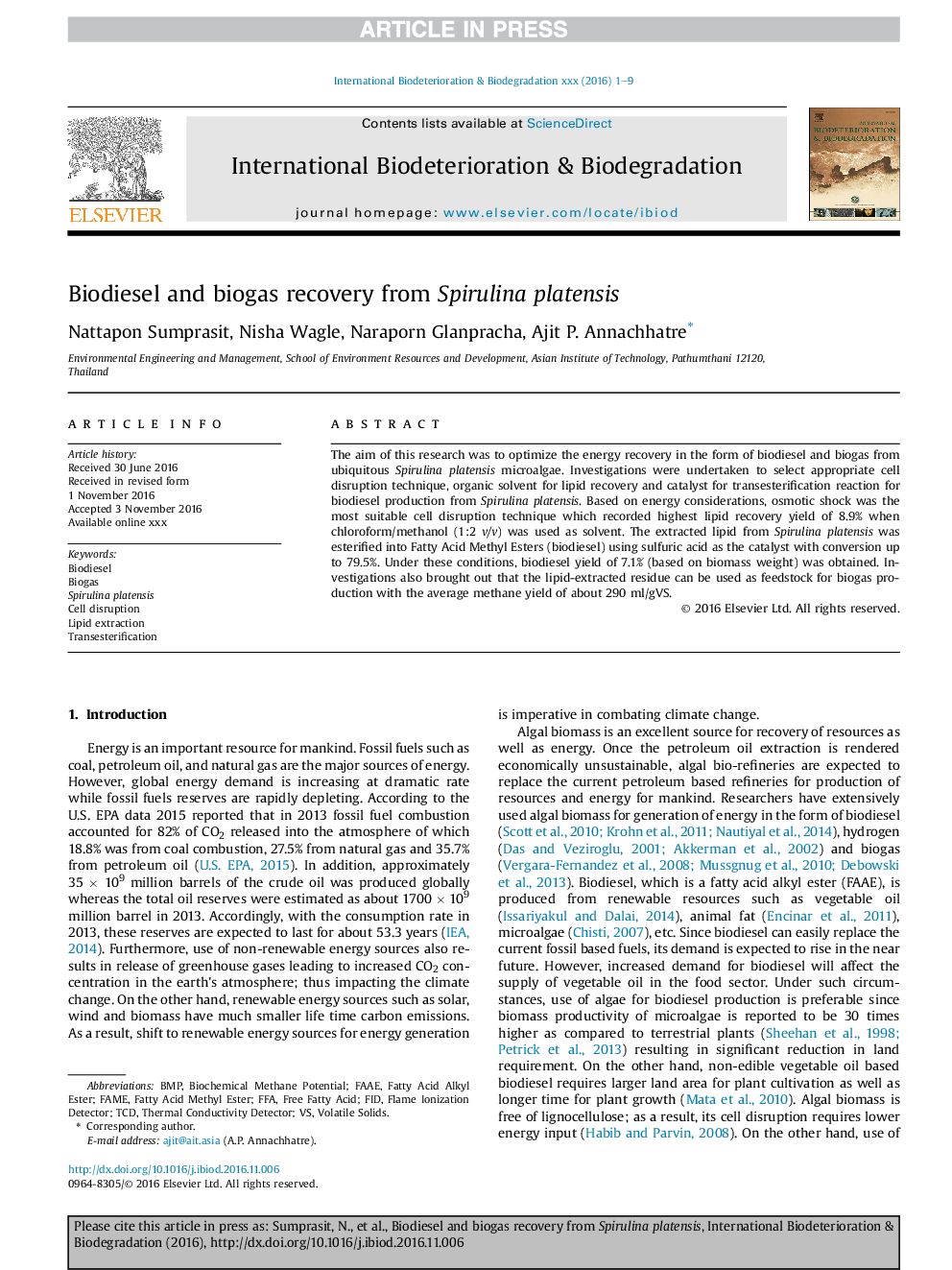| Article ID | Journal | Published Year | Pages | File Type |
|---|---|---|---|---|
| 5740446 | International Biodeterioration & Biodegradation | 2017 | 9 Pages |
Abstract
The aim of this research was to optimize the energy recovery in the form of biodiesel and biogas from ubiquitous Spirulina platensis microalgae. Investigations were undertaken to select appropriate cell disruption technique, organic solvent for lipid recovery and catalyst for transesterification reaction for biodiesel production from Spirulina platensis. Based on energy considerations, osmotic shock was the most suitable cell disruption technique which recorded highest lipid recovery yield of 8.9% when chloroform/methanol (1:2 v/v) was used as solvent. The extracted lipid from Spirulina platensis was esterified into Fatty Acid Methyl Esters (biodiesel) using sulfuric acid as the catalyst with conversion up to 79.5%. Under these conditions, biodiesel yield of 7.1% (based on biomass weight) was obtained. Investigations also brought out that the lipid-extracted residue can be used as feedstock for biogas production with the average methane yield of about 290 ml/gVS.
Keywords
Related Topics
Life Sciences
Environmental Science
Environmental Science (General)
Authors
Nattapon Sumprasit, Nisha Wagle, Naraporn Glanpracha, Ajit P. Annachhatre,
